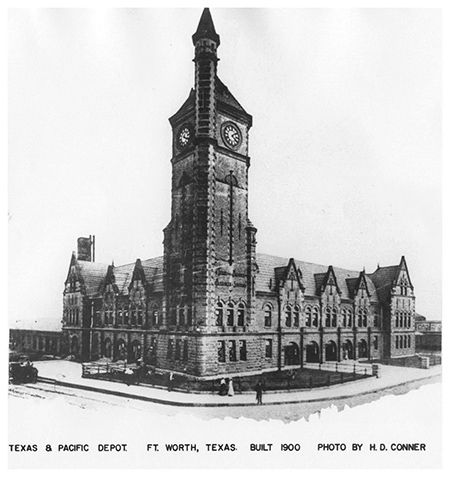Last week’s announcement that Texas Christian University and the University of North Texas Health Science Center were collaborating to create an MD school in Fort Worth was monumental.
It is one of those events that could – and likely will – change the city. The idea germinated from a breakfast between UNTHSC President Michael R. Williams and TCU Chancellor Victor J. Boschini in late March at the Worthington Hotel.
The java-fueled idea of an MD school was no less monumental than the idea for a DO school that led to the opening of the Texas College of Osteopathic Medicine in 1970 in a converted bowling alley.
Also last week, Fort Worth broke ground with social media giant Facebook on a giant data center set to be powered by wind energy in the AllianceTexas development.
Bold steps all. And if you look at the history of Fort Worth, making bold – some would say reckless – steps has been a hallmark.
How did Fort Worth become the county seat of Tarrant County for instance? The battle was between Birdville and Fort Worth in 1860. There was a vote in the county and, according to some accounts, Birdville had a barrel of whiskey set aside to lure voters to their side. Allegedly, Fort Worth officials found out about this, siphoned the whiskey and served it to Fort Worth voters. Many a vote between a cup and a lip.
Fort Worth won by 13 votes, though there were some questionable votes – 15 of them – that may have come from Wise County, according to Richard F. Selcer’s book titled simply Fort Worth. Bold? Yes. Reckless? Probably. But really, would you want to be a Birdvillian?
Then there was the matter of the railroad. Cattle town that it was, Fort Worth didn’t have a railroad in 1870s – and desperately needed one.
And the railroad was coming. The Wild West version of the Internet was on its way. That is, until a recession hit. The Texas & Pacific Railway track was stopped 16, some say 30, miles east of town. Gallingly, it was already up and running in Dallas. And Fort Worth’s population was already beginning to dwindle. It needed the railroad to keep bringing in new citizens and the goods and services to keep them here.
The Texas Legislature had imposed a deadline for the railroad to come into Fort Worth by the end of its session in July 1876. But work had stopped. Fort Worth residents turned out to finish the track, fighting unseasonably rainy weather (ring any bells?), and doing an adequate job, though B.B. Paddock, editor of the Fort Worth Democrat newspaper, said it was “crooked as a ram’s horn.” When these amateur workers reached Sycamore Creek, they had to improvise, building up the riverbed by using railroad ties. Nevertheless, some brave T&P engineer rolled engine No. 20 into town on July 18, 1876, one day before the legislature adjourned.
Other railroads followed and the city rode the successful marriage of the stockyards and the railroads for many years.
There was no stolen whiskey, questionable engineering or race against the clock this time. Just some coffee at the Worthington Hotel, but it was still a big deal for a city that continues to be a bit like that Survivor motto: Outwit. Outplay. Outlast.






